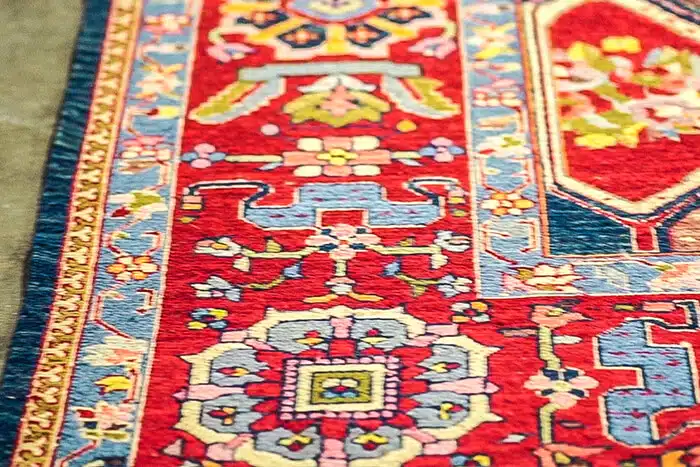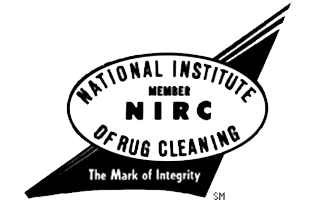High-quality rugs are a lasting investment for your home, family, and legacy. A beautiful, well-maintained rug can be happily passed down through multiple generations, a high-quality rus is a piece of your home that can be shared with your grandchildren and their children. Any time you’re investing in an heirloom work of art, such as a high-quality rug, it’s vital to choose the best quality option available. Maintaining that quality is a vital piece of the investment process, rug cleaning and rug repairs will enhance your artisan rug for years to come. Learn what makes a high-quality rug and how to maintain it with the help from S&S Rug Cleaners.
Knots Per Square Inch
The knots per square inch, or KPSI, of a rug describes how many knots are present in the design. As a general rule, high-quality rugs have more knots and larger KPSIs than lower-quality pieces. Knots are a vital component of classic rugs, which are made from knotted fibers.
Knots impact rug quality in many different ways and can be the difference between an average rug and high-quality rug. A rug with more knots is stronger, denser, and more durable than other options making it more desireable. Knots determine a rug’s durability and performance over the years. Rugs with high KPSI have tight weaves that can withstand foot traffic, furniture weight, and general wear-and-tear for decades, these denser knots also allow artisans to create more intricate, clear patterns and designs.
Rugs with fewer knots don’t offer the beautiful appearance or long-lasting performance of higher-quality pieces. Loosely woven rugs without many knots show damage quickly. These pieces often develop bald spots, traffic patterns, and faded patches. Fewer knots also mean that low-quality rugs are less attractive. Since these rugs don’t have as many knots, they can’t showcase beautiful designs.
Detailed Workmanship
The finest rugs in the world are made by experienced, dedicated artisans. These craftspeople spend decades honing their craft, often working in family businesses boasting centuries of expertise. Expert rug design involves many hours of involved handicraft. You can enhance your rug’s appearance with regular rug cleaning services.
Rug collectors know that different levels of quality can be found around the world. For example, Persian rugs from Iran have a reputation as being the finest rugs available. Iranian rug designers have truly perfected hand-weaving techniques and can craft gorgeous works of art.
However, not every rug is made using the same philosophy. The time and labor invested in rugs can vary widely from country to country, and even between local design houses. You should look for intricate patterns and flawless execution to gauge the amount of detail that went into a rug.
Heritage Materials
High-quality rugs begin with the finest artisan materials. Wool is the classic choice for fine rugs. Modern rugs are available with many different fiber blends, yet wool remains the gold standard.
Hand-woven rugs from Iran and other parts of Asia are still made using the best available wool. Persian wool is especially prized for its combination of softness and strength. Iranian wool sheep are fed special diets to encourage these qualities. Traditional Iranian or Persian rugs are woven from this fine wool which is why they’re considered the best in the world.
Rug houses in countries including China, Pakistan, and India also appreciate Persian wool, importing it for their designs. Regardless of where a rug is woven, ask about its wool source. The best rugs are still made from Persian wool.
Be wary of tufted rugs, even those made of wool. Tufted rugs are made from loose materials which are bonded with chemicals and glue. These chemical agents can emit hazardous fumes that are dangerous to your family. Bonded materials are formed into clumps or tufts, then attached to fabric or plastic backing.
Tufted rugs are easy to mass-produce thanks to this low-quality process. You can find tufted rugs at much lower prices than hand-woven rugs, but price and quality are related in this case.
Coloring Agents
The type of dye or coloring agent present in a rug also helps determine its quality. Traditional Persian rugs often feature bold colors. These striking combinations call attention to intricate woven designs while also masking light dirt from regular foot traffic. Richly colored Persian rugs are a classic interior design choice that can enhance any room.
Traditionally, rugs were dyed using organic materials found in nature. Artisans collected fruits and vegetables to create a huge range of colors. Neutral rugs featured shades of white, beige, and brown, while more colorful options shone in blue, green, pink, red, and yellow.
Today’s best rugs are colored with one of two options. Some design houses still use traditional vegetable dyes, while others have adopted top-quality pigments. Both choices deliver deep, vibrant colors that should easily withstand decades of use.
Learn More About The World’s Best Rugs
A beautiful rug is a smart addition to your home. Choose a high-quality rug to enjoy years of use with minimal rug repairs. These tips will help you evaluate rugs when you’re ready to expand your collection.





